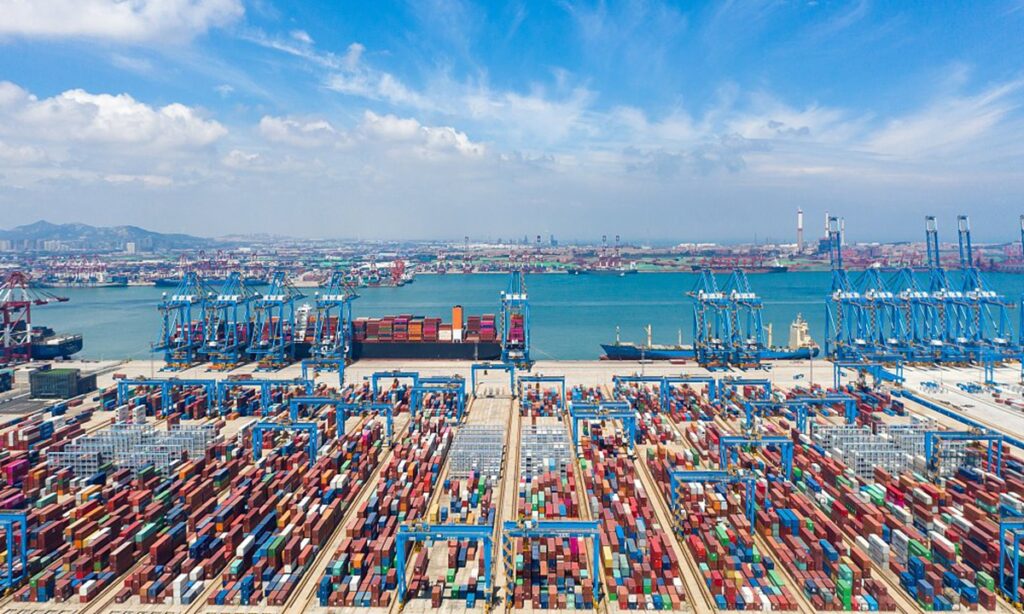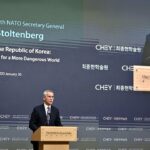Given the huge scale of US-China trade, views are still divided as to the “decoupling” prospects of bilateral trade. Yet, it is undeniable that US-China trade trajectory is showing increasing signs of a deviation from normal trend, which is discouraging and requires attention.
According to media reports on Sunday, China may have lost the position as the top supplier of US goods imports in 2022 due to impacts from US-China geopolitical tension, COVID-19 pandemic, and other factors.
The US release of November trade numbers showed US imports of goods from China collapsed further in November, continuing the fall that began in September. Thus, during the first 11 months of last year, the US already imported more from the EU than from China in value terms, according to media reports.
At the superficial level, the development seems to be exactly what the US attempted to pursue a “decoupling” push and to crack down on China’s supply chains has achieved. The political will may have affected the trend of US-China trade to some extent, driving it toward a “lose-lose” situation for both sides.
Despite geopolitical tensions, China and the US are important trading partners, and 2022 still marked a record year for China-US trade volume, but there is an obvious deviation of their trade from their overall trade trend. Statistics from China’s General Administration of Customs showed that in 2022, China’s exports to the US rose 1.2 percent year-on-year, with imports from the US down by 1.1 percent. This is in comparison to China’s 2022 export gain of 7 percent, with imports up 1.1 percent.
If anything, it represents an abnormal state of bilateral trade. The pandemic may play a role during the process, but with China’s optimization of COVID-19 response, the impact from this factor has abated. That leaves the US policies in main play in the current abnormal trend. Over the years, the US government has launched trade war against China, imposed tariffs on $300 billion worth of Chinese goods, and issued a series of bans on exports of high-tech products to China. All these have contributed to continuing trade tensions that have left their mark on bilateral trade.
In spite of the pressure from the US across global supply chains, China’s trade with other major trading partners continued to gain momentum. In 2022, China’s trade with ASEAN surged 17.7 percent year-on-year, while trade with the EU increased 8.6 percent, an apparent manifestation of the resilience and diversification of Chinese trade with the rest of the world.
Moreover, past years saw some low-end manufacturing transfer to China’s neighboring countries under the US trade policies and other factors. This is an inevitable process of China’s industrial upgrading manifested in the extension of industrial chains.
Of course, the trade diversification doesn’t mean that we don’t value trade with the US any more. China’s willingness to see bilateral trade get back to the normal track remains unchanged, but the ball is actually in the US’ court when it comes to improving bilateral trade ties.
Through any lens, strengthening the coordination of economic and financial policies and promoting cooperation in the economic and trade fields between the two largest economies in the world are in the interests of both sides and in line with the law of the market economy. Distorting trade ties based on political reasons is against the laws of the market economy, and to go down on such a wrong path will have serious consequences.
Indeed, except for some anti-China forces and politicians keen on zero-sum political thinking, many businesses in the US are looking forward to easing tensions of bilateral trade, which is the foundation or “ballast” of China-US relations. The US is still facing the risk of recession, with its inflation remaining at high levels, while China is trying its best to fuel a full-fledged economic recovery from the pandemic. The status quo presents the room for expanding mutually beneficial cooperation, if political headwinds are not involved. Washington needs to make adjustment to its China trade policy before opportunities slip away.
(Global Times)




